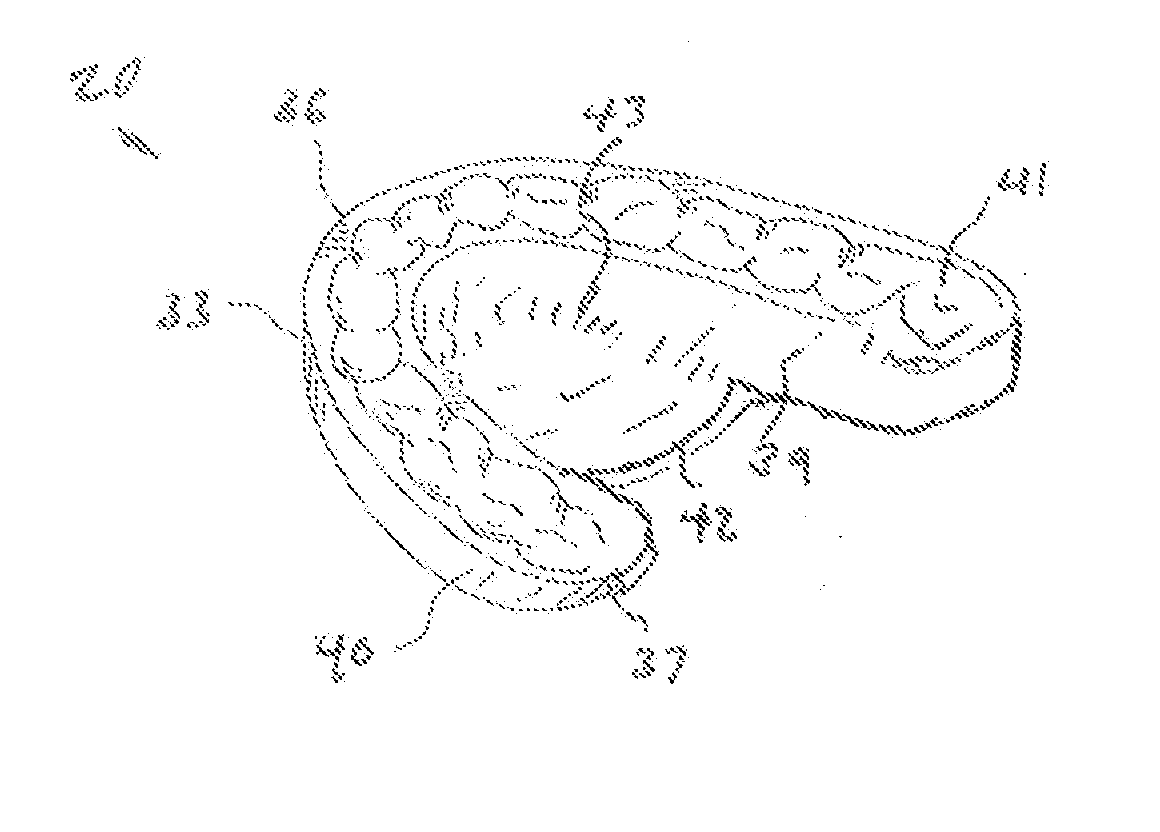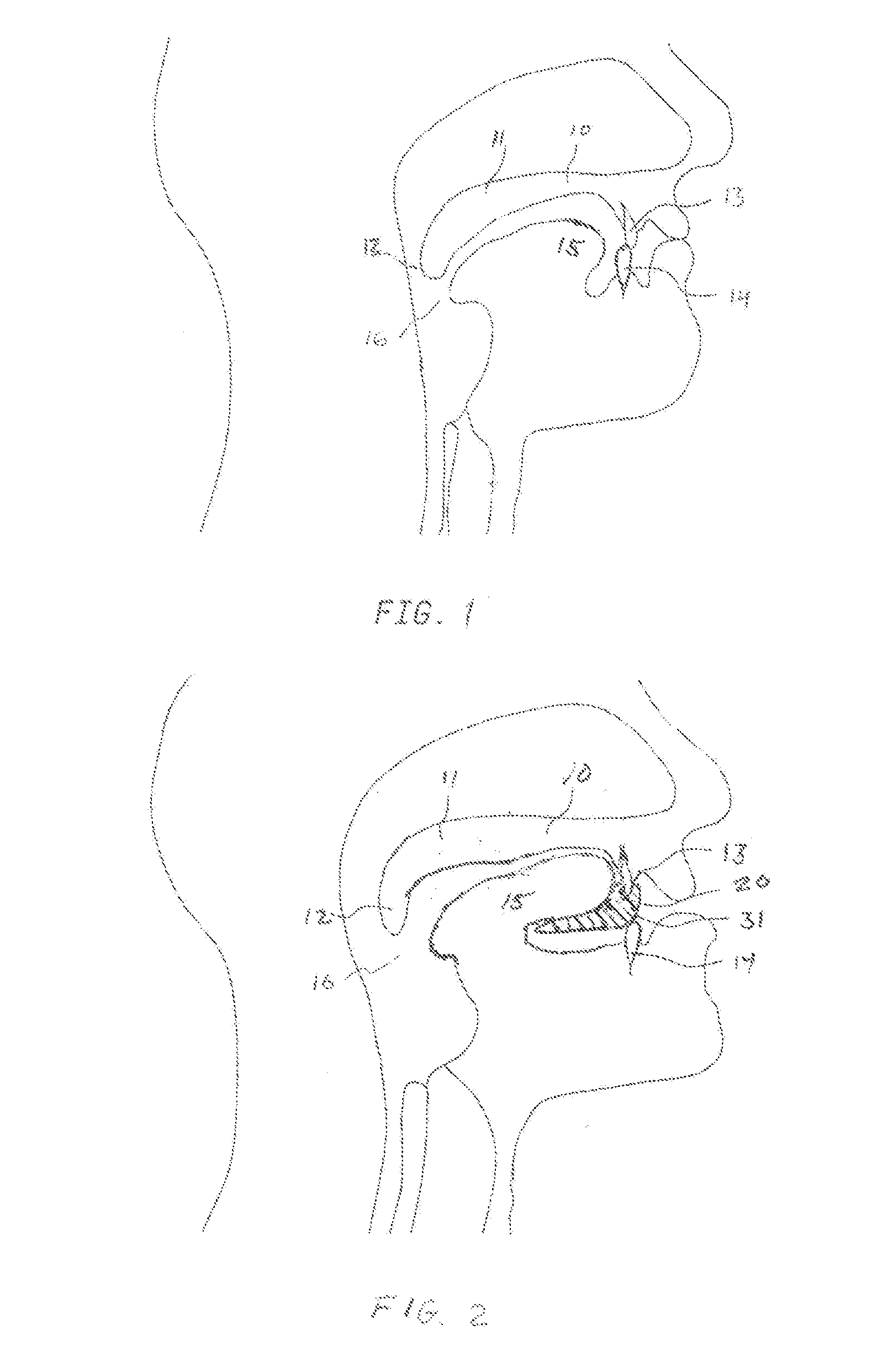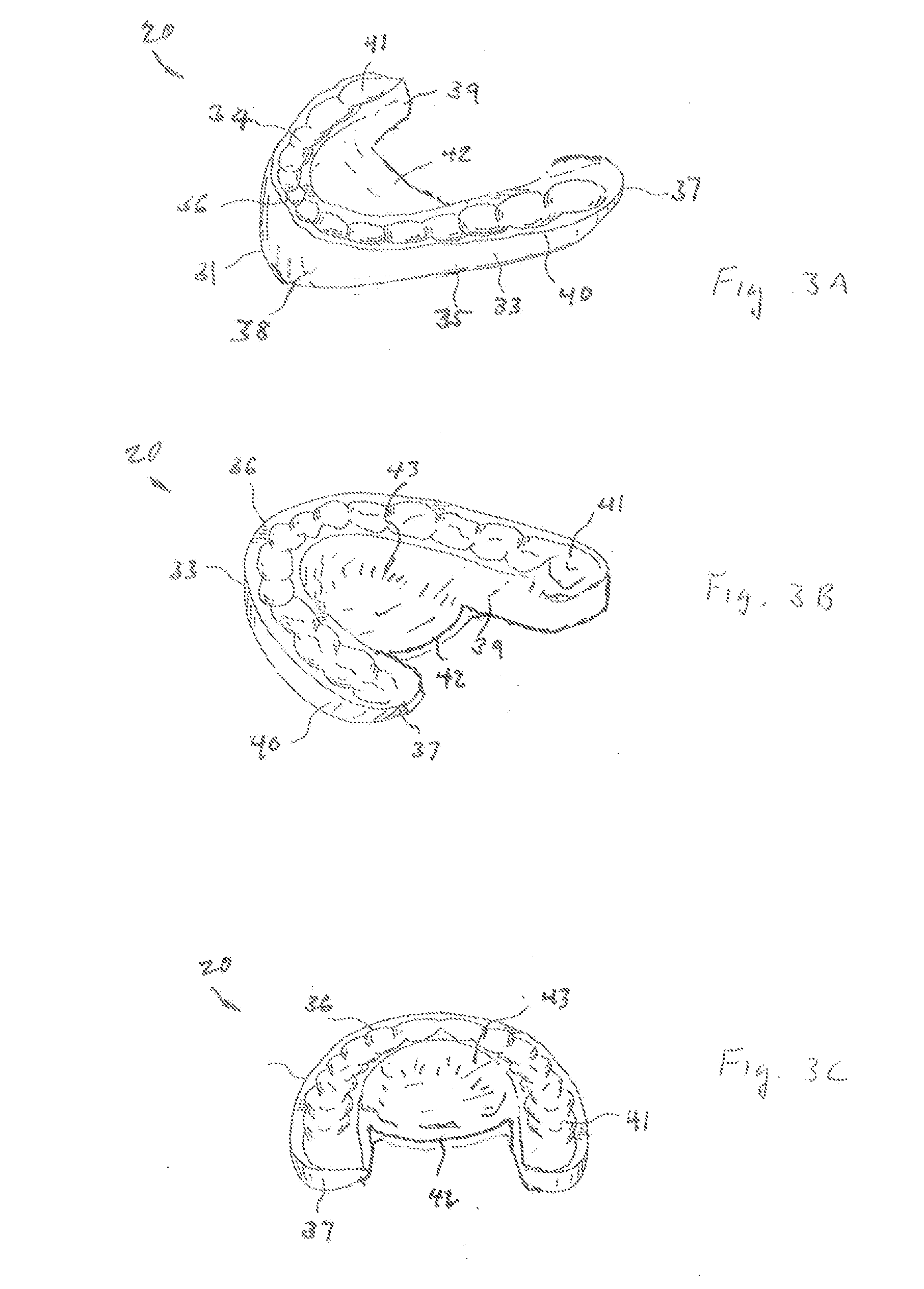Intraoral device for treatment of snoring, sleep apnea and tmd
a technology for snoring and sleep apnea, which is applied in the field of intraoral devices for treating snoring, sleep apnea and tmd, can solve the problems of aeroelastic fluttering, waking and poor quality sleep, and the economic and social cost of osa and chronic snoring, so as to achieve convenient portability, not generating noise, and easy reversibility
- Summary
- Abstract
- Description
- Claims
- Application Information
AI Technical Summary
Benefits of technology
Problems solved by technology
Method used
Image
Examples
Embodiment Construction
[0024]The present invention is an improvement on the dental prosthetic devices disclosed in U.S. Pat. No. 5,915,385, the entire contents of which are incorporated herein by reference. The invention provides a device for removable placement in the mouth of a user for the relief of sleep-related breathing disorders, which comprises (a) an upper portion adapted to be engaged with the upper dentition of a user; (b) a downward extension suspended from the anterior end of the upper portion, the anterior surface of said extension being configured to be engaged against at least some of the lower front teeth in the user's mouth, causing the jaw of the user to be urged forward; which curves rearward to form (c) a rearward extension, having an upper surface which is curved upward at its lateral margins so as to define, with the hard palate of the user, a tongue-receiving cavity that is sized and shaped to engage the tip and a small portion of the blade of the user's tongue.
[0025]Preferably, th...
PUM
 Login to View More
Login to View More Abstract
Description
Claims
Application Information
 Login to View More
Login to View More - R&D
- Intellectual Property
- Life Sciences
- Materials
- Tech Scout
- Unparalleled Data Quality
- Higher Quality Content
- 60% Fewer Hallucinations
Browse by: Latest US Patents, China's latest patents, Technical Efficacy Thesaurus, Application Domain, Technology Topic, Popular Technical Reports.
© 2025 PatSnap. All rights reserved.Legal|Privacy policy|Modern Slavery Act Transparency Statement|Sitemap|About US| Contact US: help@patsnap.com



